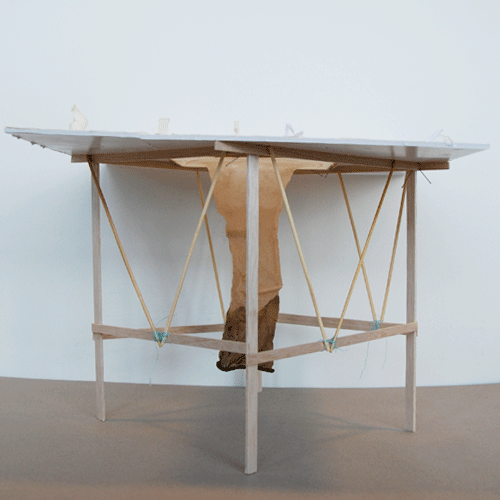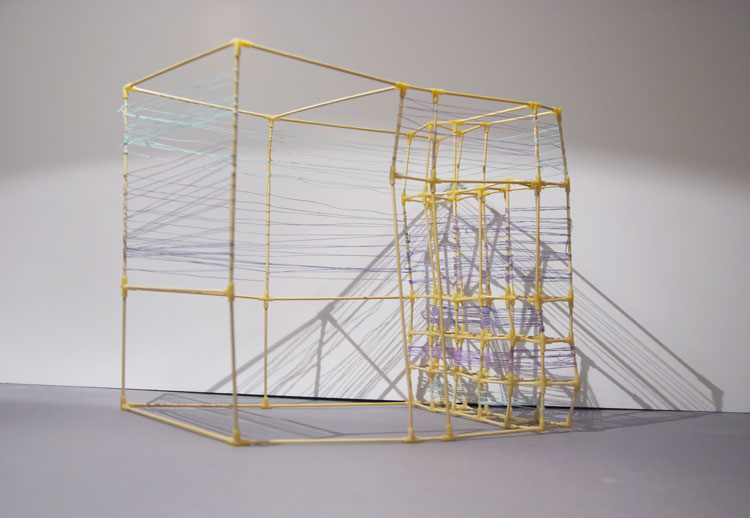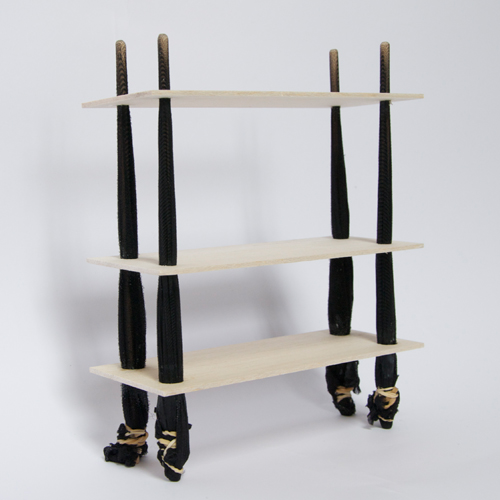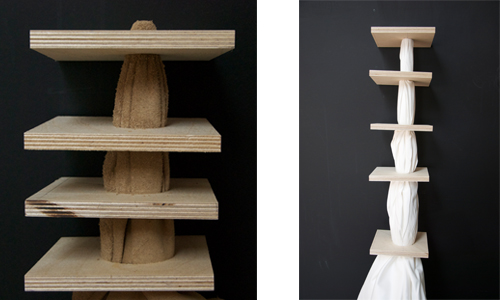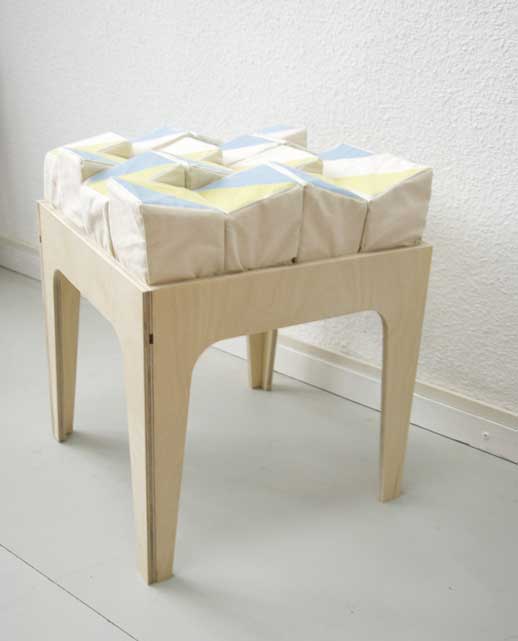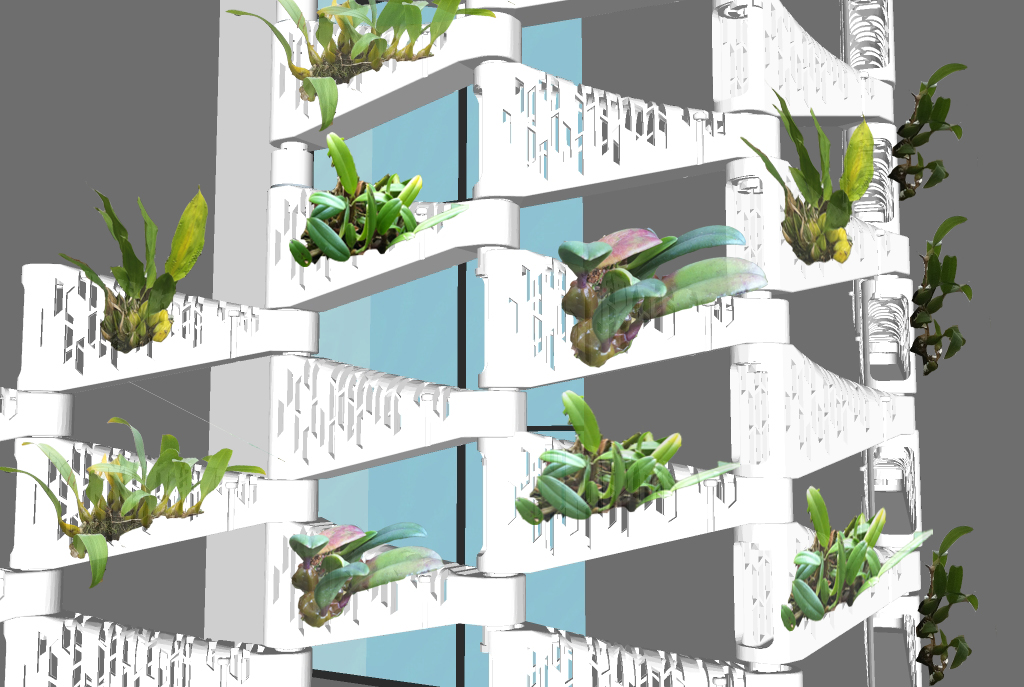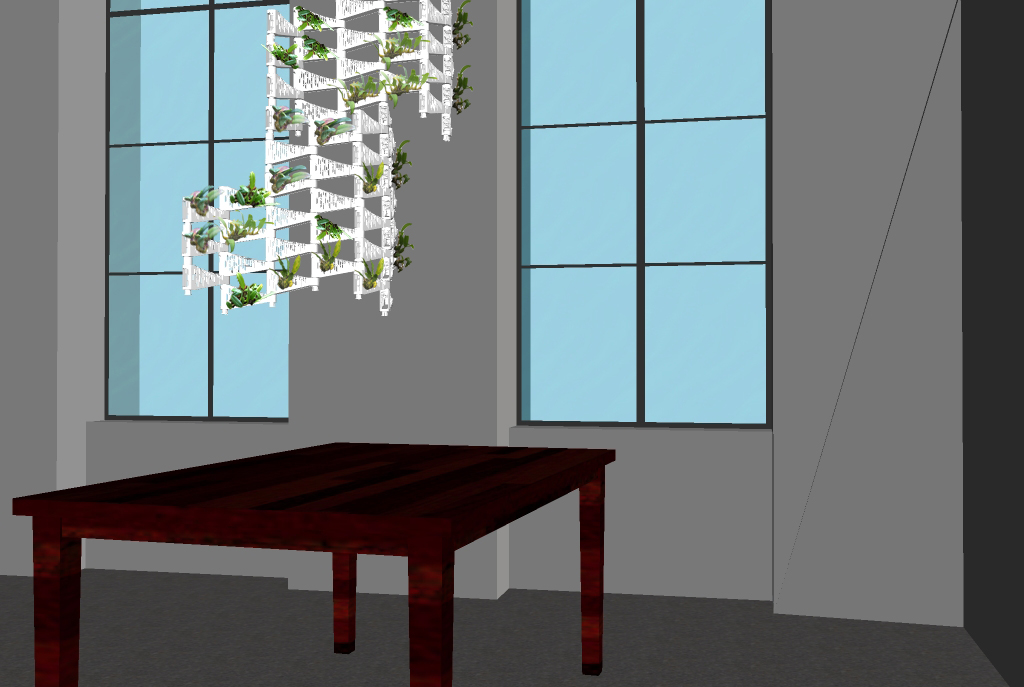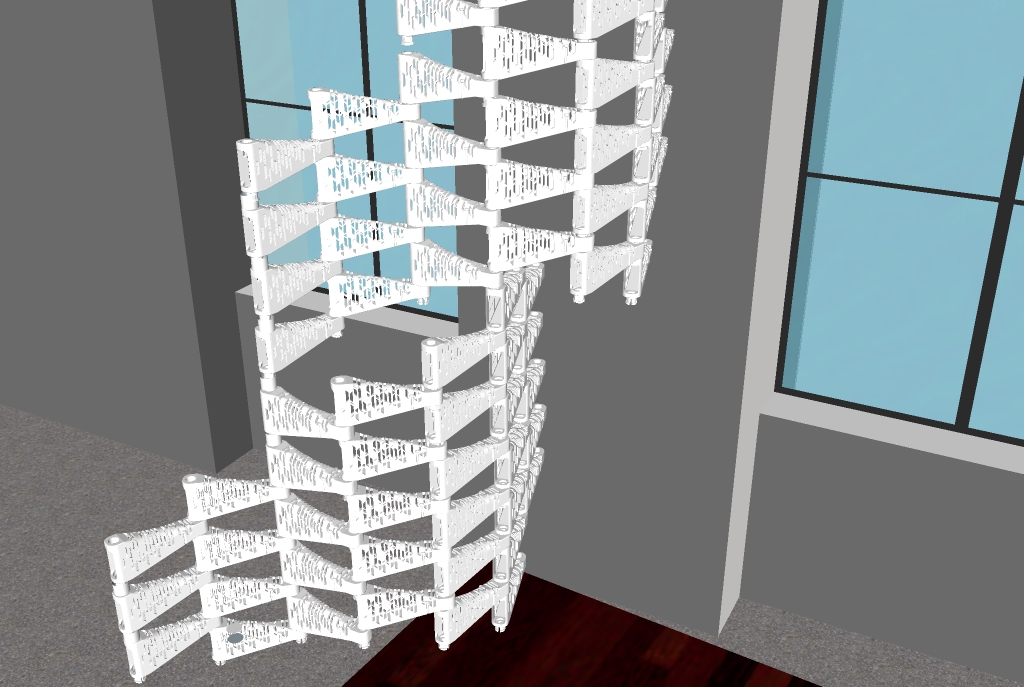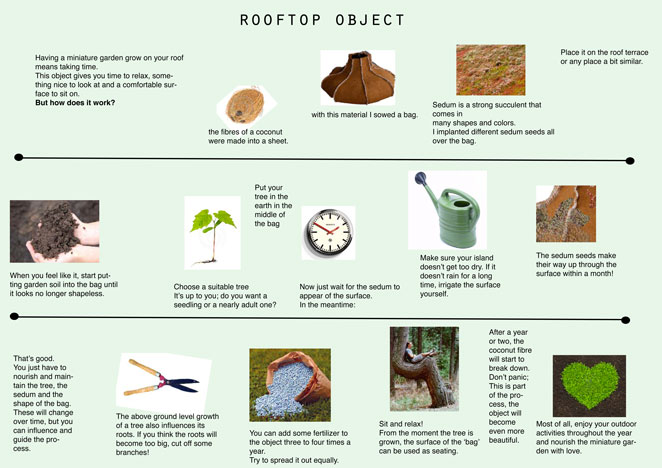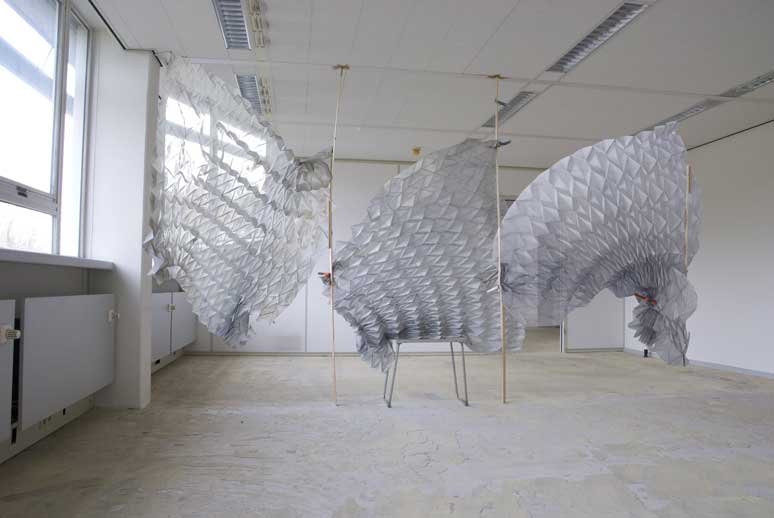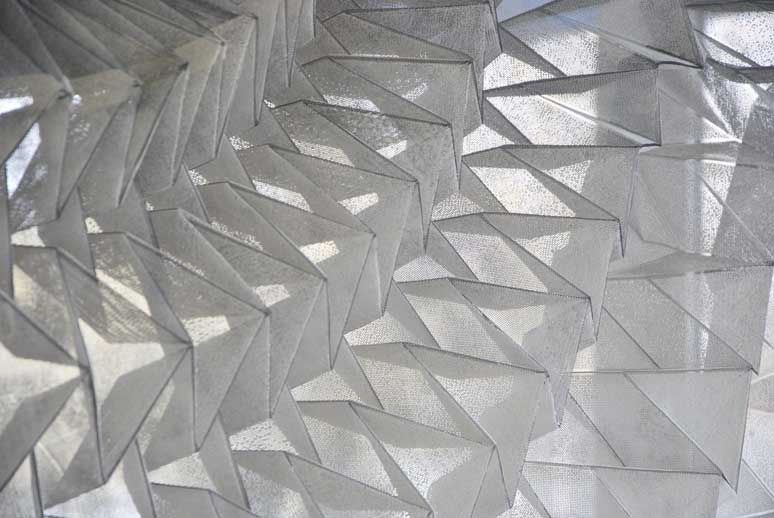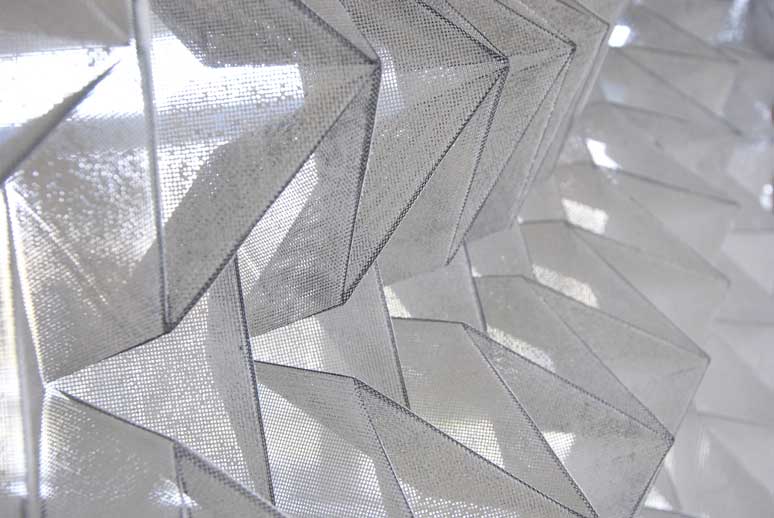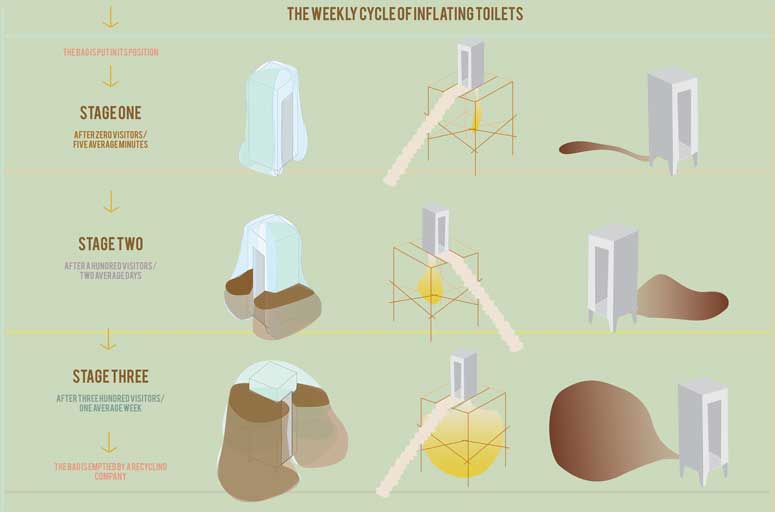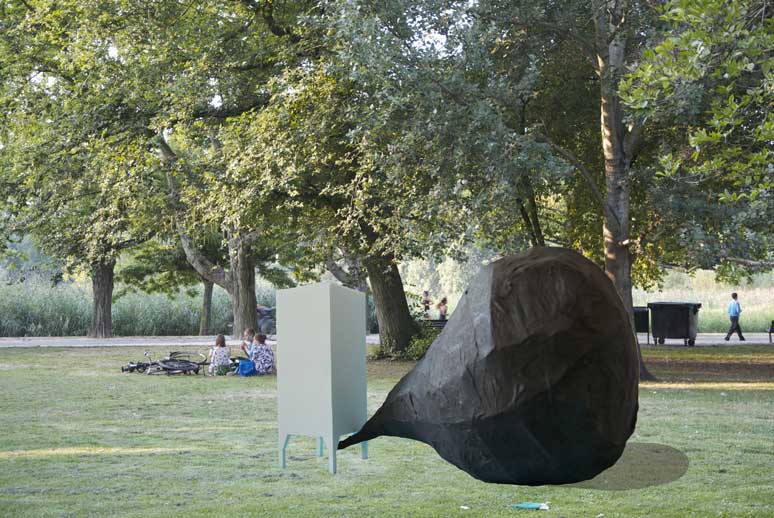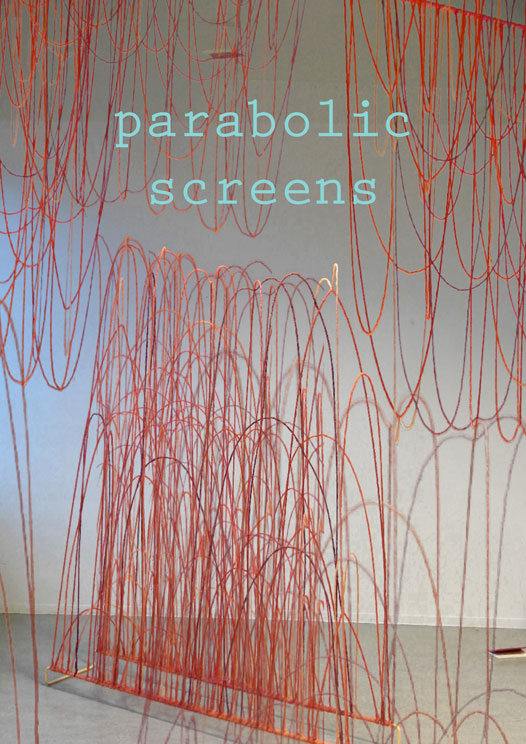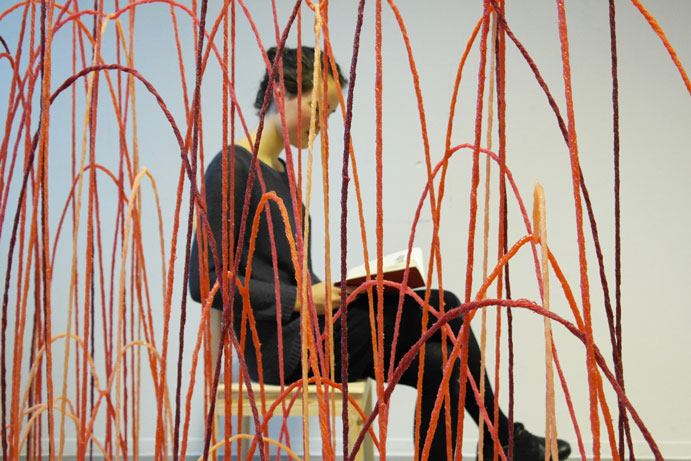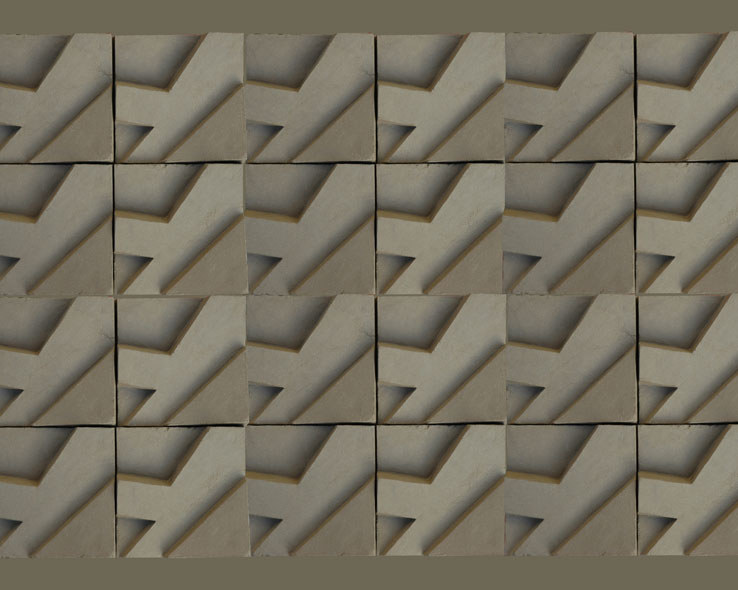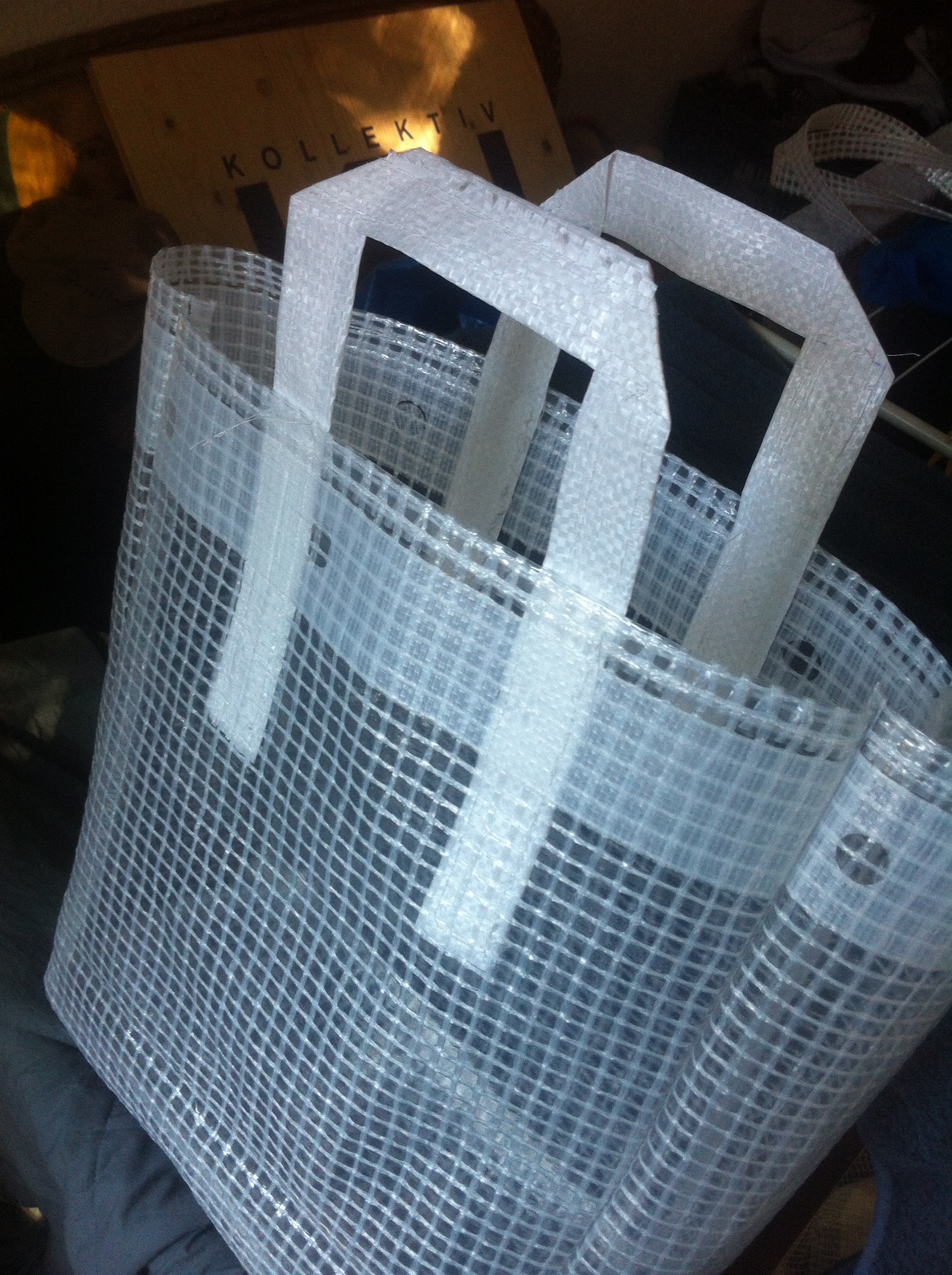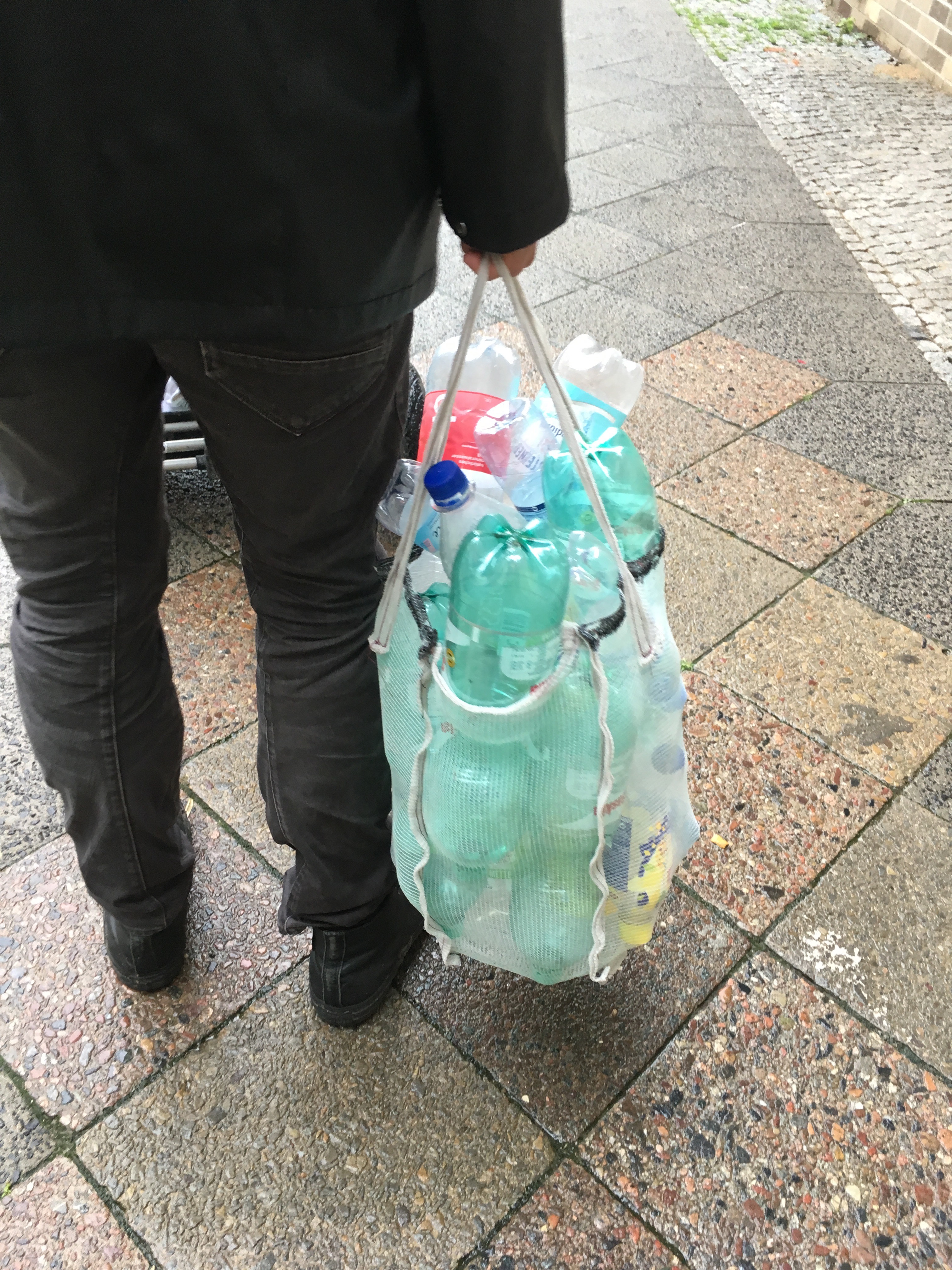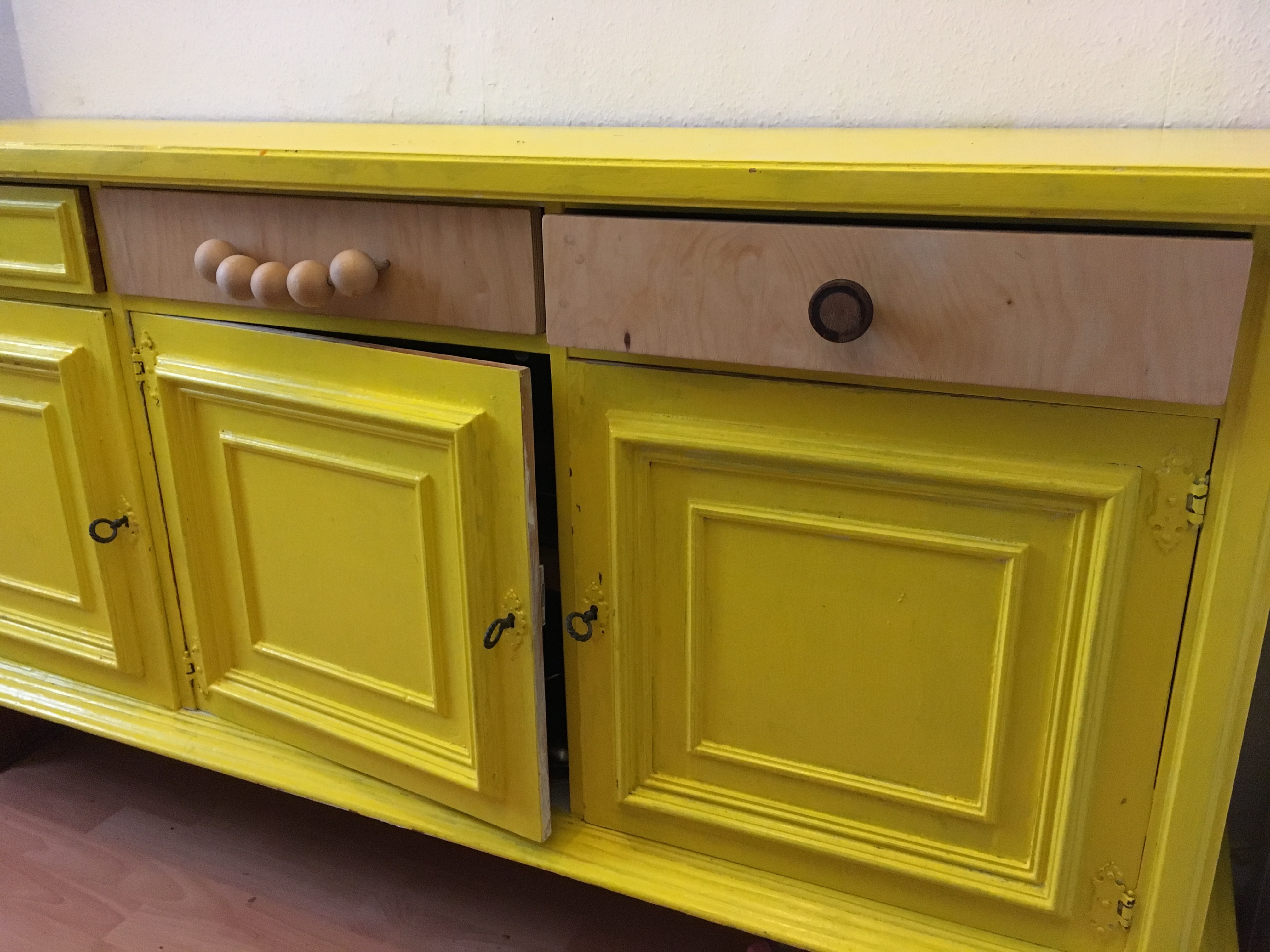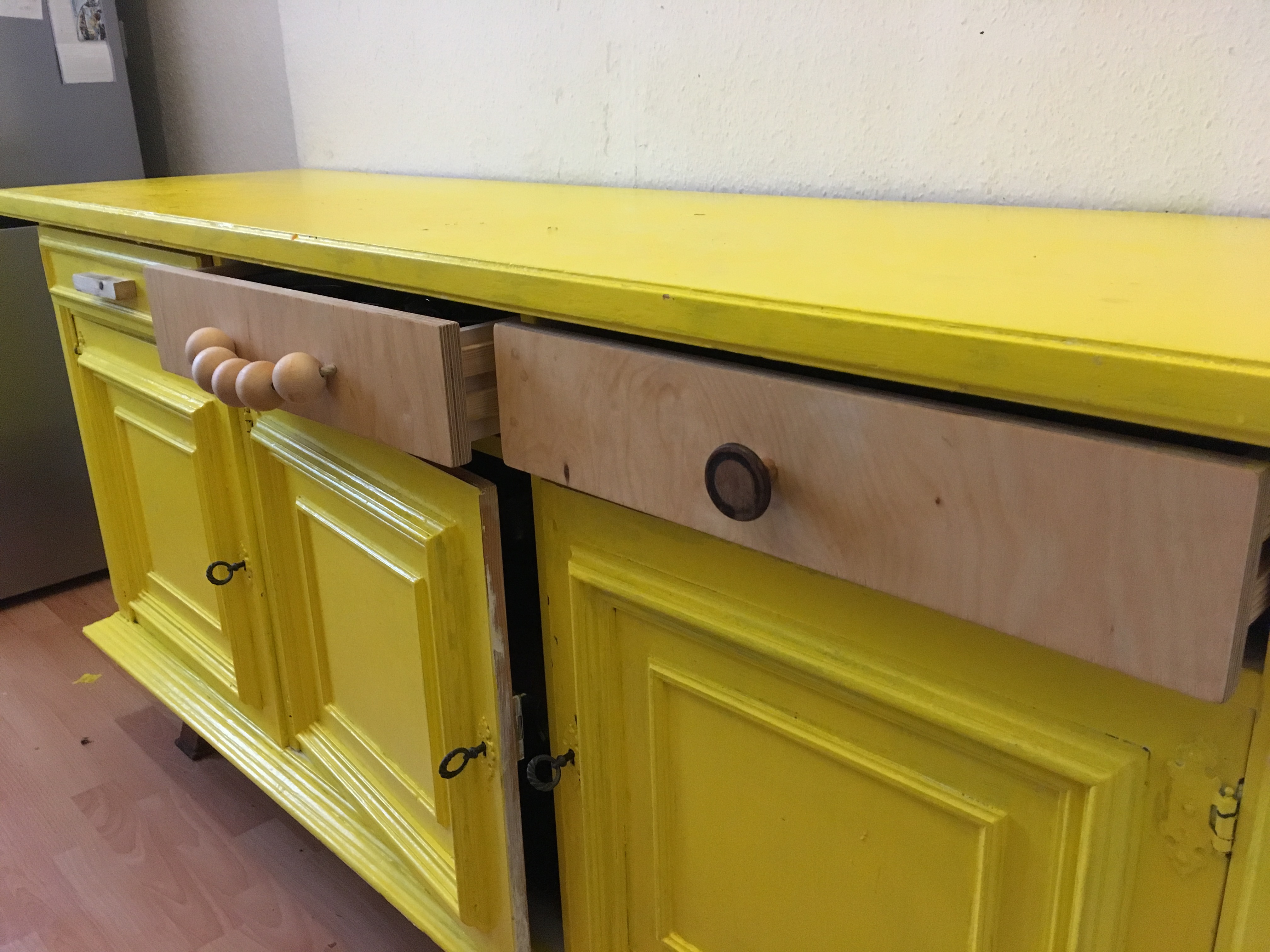Hiding folds: My research on how folded shapes can provide a sense of beauty and privacy.
Marjolein Mulder is a product + interior designer and artist. Since her 2014 graduation at Design Academy Eindhoven, she works and lives in Berlin.
Her projects often involve the re-use of scrap material, and investigate our relationship to objects we use every day. The furniture we surround ourselves with can be as dynamic as life itself.

Giant Gap (2012)
In 2010 a ‘sinkhole’ suddenly appeared in Guatemala: a 200 feet deep gap that swallowed buildings and cars. This unannounced vanity of the earth we stand on made me want to explore the nature of a giant gap. How could the gap look if we isolate it from its surroundings, if we were able to watch the part that is hidden underground? And what would it be like to fall in this gap, moving into a space far away from the common world above the ground level?
Sketching space (2014)
I wanted to be able to make threedimensional sketches, placing straight lines in space. Bamboo branches are light and strong, and to connect them I developed flexible connection pieces made from rubber.
Using colorful ropes within the structure makes it more solid and fixes its position. The possiblities to redifine a big space are endless.
PDF
Movie
Classic Crease (2013)
An exploration of news ways to connect two parts started this project. Can I use a flexible material to reinforce the connection between two solid parts? I tried manipulating aluminium, cotton and other materials.
In the final connection, applied to a coffee table, a circlular piece of leather is used. The way the leather sits around the wooden leg makes sure the connection stays fixed; as the leg goes into the surface of the tabletop, the amount of material pleated around it is increased.
Colorfield Stool (2013)
I aimed to make a playful and dynamic seating object.
I did this by letting the upholstery consist of simple elements, allowing its user to vary in patterns, color combinations and height of surface.
At the same time, the stool remains a calm and balanced object in the domestic area.
Epiphyte (2014)
Epiphytic plants grow on the outside of trees, living from rain moisture and decaying natural rests. Amongst them are tons of deautiful orchid species. I introduce them into the living room with the modular system ‘Epiphyte’. Cone shaped volumes are filled with rock wool which absorbs and contains nutrition. The orchids are attached on the outside and reach for the moisture with their air roots. Every plant can take the space it needs to develop on the system. The hanging or standing installation becomes more and more alive as time goes by.
Rooftop object (2013)
The life cycle of a chair was my starting point for this project. Most of the products we know are already in their 'perfect state' when you buy them, even though they will slowly transform afterwards.
This chair, made of coconut fibre nailed sheets and filled with garden soil, becomes nicer to sit on and to look at over time. Over the course of many years, the roots of the tree will make the object stronger from inside and small succulents will completely cover its surface.
Hiding folds (2014)
Experiments with complex folded surfaces were my starting point for project. I was interested in how they could make a space more personal and separate it from the outside, to be in a temporary universe; folding means it always stays flexible, so the ‘wall’ can be folded back to a flat package. Then I started linking more specific materials to the techniques. I ended up inventing a material of meshed screen with a silkscreened print that indicated the folding lines. This material is quite stiff, translucent and can meander freely through the space. I made clambs to shape the folded sheet in a threedimensional way and to attach it to objects in the surroundings.
Movie
Inflatable public toilet (2014)
A public toilet in a park is a tricky subject. We don’t want to disturb the nature too much and there is no possibility of contructing an underground sewage system. I took advantage of this fact and made the volumes containing visitor’s ‘human waste’ part of the architecture. The object changes corresponding to how many people have visited the toilet. The increasing volume of the rubber bags makes the toilet an intruiging phenomenon. On the practical level it indicates the limited capacity and shows to passing service workers when the toilets have to be emptied.
Makers estafette (2013)
A project that is part of my internship at The Beach Amsterdam a social design studio. Every year a ‘makers festival’ is organized which invites visitors to connect to the Amsterdam neighborhood and to each other, by participating in ‘makers activities’. I designed a game that was played during the festival. I provided wooden parts I designed, as well as screws, tools and ropes. Two teams of max. four persons could build a chair out of the parts. They only had forty-five minutes to do this. It was not as much about the end result as about the process and the group spirit. At the end of the day, a winner was chosen.
More info
Paper stool (2012)
During a research I found out that a lot of paper is processed by people who work from their home, every day. I then started looking for a more fun way to deal with paper waste.
'Paper stool' is a 100% cellulose object that combines the features of a paper bin with those of a stool.
It starts from a flat shape and grows as you fill it with cropped paper sheets. Once filled up and solid, you can sit on it.
When it starts to fall apart, bin it with as paper waste and start up a new stool.
Parabolic screen (2014)
If you suspend a textile thread from two points, it creates a parabolic shape in between. Many paraboles of different heights and lenghts make an interesting landscape. To be able to preserve and use this, I impregnate the threads after creating a composition. The threads are now fixed to the frame and the composition can be a free standing strucure.
Rebuilt (2013)
The Chinese artist Ai WeiWei used elements of former dynasty houses from his country to create a pavilion for the Dokumenta fair in Kassel. The way he gave these doors and windows a new meaning is what triggered me to start this project.
For a couple of months, every time I saw a conainer in front of a building I took a picture of both the container and the building. Then I took some waste objects from the container. At home I took them apart and moulded the pieces into simple new houses. They clearly are a family now, although each member has a different background story.
Night Club Garden (2016)
For the garden renovation of a night club in Berlin, I was asked to design and build benches for the guests as well as the front counter of a food container. This all had to be done within one week. I took scrap wood as the main material to build playful and mobile seating elements. The counter was made from wooden elements salvaged from a formal church.
Building Site Bag (2017)
Fascinated by the open textile structure that is often used to cover scaffoldings, I thought this material could also be wrapped around things we want to take with us. I turned this and other building site textiles into shopping bags. The net material shows part of what is inside, which makes it more interesting to look at than a classical ‘closed’ shopping bag.
Collage Cupboard (2017)
In a beautiful found cupboard, two drawers were missing. These were replaced by custom-made ones that don’t fit in, but celebrate the beauty of repairing broken things; through creative reparation, furniture can not only function longer, but really comes alive and tells a story.
Please contact me if you want to ask or discuss something.
+49 17620099027
marjoleinisoldemulder@gmail.com
Isländische Straße 5
10439 Berlin
Germany

